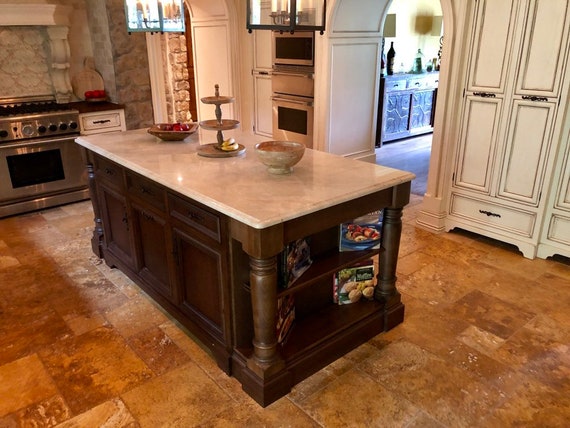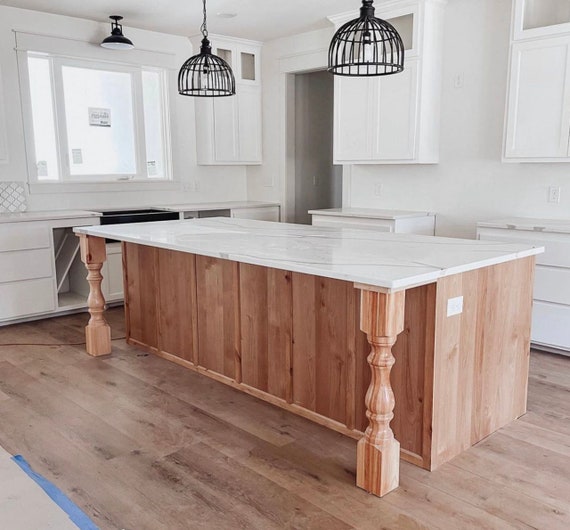The Leading Kitchen Island Leg Styles to Complement Any Type Of Design Aesthetic
The Leading Kitchen Island Leg Styles to Complement Any Type Of Design Aesthetic
Blog Article
Discovering the Essential Attributes of a Kitchen Island Leg for Your Culinary Space
The cooking area island offers as a central center in any type of culinary area, and the choice of leg layout is essential in enhancing both its capability and aesthetic allure. Recognizing the vital functions of kitchen area island legs-- consisting of material choices, layout styles, and stability factors-- can dramatically affect the total experience within the kitchen area. As we explore these aspects, we will certainly uncover exactly how thoughtful modification and accessories can boost your kitchen area island from a plain utility to a striking focal point. What specific factors to consider should be prioritized to accomplish this equilibrium?
Relevance of Kitchen Island Legs
Kitchen area island legs play a critical duty in both the performance and aesthetic appeals of a cooking area room. They not only support the weight of the island however likewise enhance the overall style, adding to the kitchen area's aesthetic allure. The selection of legs can dictate the style of the kitchen, be it modern, typical, or rustic.
Functionally, robust and correctly created legs make sure security, enabling the secure usage of the island for numerous jobs such as food prep work, eating, or enjoyable. Strong legs avoid wobbling and moving, giving a reliable surface for daily tasks.
In addition, the elevation and positioning of the legs can affect the convenience degree for those seated at the island. A well-considered elevation can fit bar stools or chairs, promoting a welcoming setting for celebrations.
In enhancement to these functional considerations, kitchen island legs can function as a prime focus in the area (kitchen island leg). Decorative or distinctly made legs can elevate the design visual, making the island a focal point. Therefore, selecting the right cooking area island legs is essential for balancing kind and feature in any type of culinary room
Material Options for Legs
Selecting the ideal product for kitchen island legs significantly influences both longevity and layout. Typical material alternatives include timber, metal, and rock, each offering distinct benefits.
Wood is a prominent selection because of its warmth and flexibility. It can be conveniently personalized to match various decoration styles, from rustic to modern. Hardwoods like oak and maple supply outstanding strength and long life, while softer woods can be a lot more vulnerable to put on and tear.
Steel legs are favored for their smooth, modern-day aesthetic. kitchen island leg. Stainless-steel and light weight aluminum are not just durable but additionally resistant to rust and deterioration, making them optimal for cooking area environments. They can produce a commercial look and are typically offered in numerous finishes to match various other cooking area elements
Rock legs, such as granite or marble, include an element of high-end and security. While heavier than various other materials, they provide remarkable longevity and can withstand considerable weight. Nonetheless, they might require additional support to make sure correct balance.
Inevitably, the option of material must align with both useful requirements and the total style vision of the kitchen room, guaranteeing that the island legs enhance both energy and visual appeals.
Layout Styles to Think About
What design styles should be taken view into consideration when choosing legs for a cooking area island? The option of leg design considerably affects the overall visual of your culinary area. For a modern kitchen area, minimalistic and smooth leg layouts, such as stainless steel or geometric shapes, can improve the modern charm, giving a clean and minimalist look.
In comparison, typical cooking areas benefit from traditional designs such as turned or sculpted wood legs, which add warmth and personality. These options commonly feature complex information that complement vintage home furnishings. For a rustic ambiance, think about legs made from redeemed timber or wrought iron, which bring an organic, earthy top quality to the space.
If you lean in the direction of a commercial theme, robust steel legs with a troubled coating may be optimal, giving an edgy yet innovative touch. Additionally, farmhouse style kitchen areas can include chunky legs that evoke a sense hop over to here of strength and homeliness.

Elevation and Stability Aspects
The height and stability of a kitchen area island are essential elements that straight impact its capability and individual experience. An excellent cooking area island leg must offer adequate height to fit a range of tasks, from food preparation to laid-back dining.
Stability is equally crucial, especially as kitchen islands usually serve as focal factors in culinary settings. The leg's accessory to the island's base must be safe and secure, guaranteeing long life and durability versus the wear and tear of everyday use.
Modification and Accessories
Modification options and devices for kitchen island legs can substantially enhance both the visual appeal and performance of the room. House owners can pick from a range of materials, including stone, wood, and steel, enabling seamless combination with existing cooking area design. The option of coating-- be it a natural discolor, repaint, or powder coating-- additional individualizes the look, making certain that the island complements the general style motif.
In addition to material and surface, home owners might also check out the consolidation of devices such as attractive brackets, flexible feet, or integrated shelving. Brackets can provide extra assistance while adding to a modern or rustic aesthetic. Adjustable feet Recommended Reading are particularly useful for irregular floor covering, making certain the island remains secure and degree, which is crucial for both safety and usability.

Conclusion
To conclude, cooking area island legs offer a vital duty in providing stability and improving the general visual of the cooking room. The option of materials and design styles contributes to both performance and aesthetic appeal, while factors to consider of elevation and stability make certain useful usage. Moreover, modification options and accessories can boost the kitchen island, making it an unique focal point within the home. Thus, careful consideration of these features is important for an effective kitchen design.
The kitchen island serves as a main center in any culinary room, and the selection of leg layout is essential in enhancing both its functionality and aesthetic charm. Understanding the vital features of cooking area island legs-- consisting of material alternatives, style styles, and stability variables-- can considerably impact the total experience within the kitchen area.Kitchen island legs play a critical function in both the functionality and visual appeals of a kitchen area.What design styles should be taken into consideration when selecting legs for a cooking area island?In final thought, kitchen island legs offer a crucial duty in supplying stability and boosting the general aesthetic of the culinary room.
Report this page